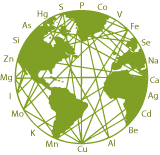Toxicological Profile and Facts
Potential Source of Exposure
Thallium is produced or used in power plants, cement factories, and smelters. People who work in these places can breathe in the chemical or it may come in contact with their skin.
Cigarette smoking is also a source of thallium. People who smoke have twice as much thallium in their bodies as do nonsmokers.
Even though rat poison containing thallium was banned in 1972, accidental poisonings from old rat poison still occur, especially in children.
Routes of Excretion
Thallium leaves the body slowly. Most of it is excreted in urine and to a lesser extent in feces. It can be found in urine within 1 hour after exposure. After 24 hours, increasing amounts are found in feces. It can be found in urine as long as 2 months after exposure. About half the thallium that enters various parts of your body leaves them within 3 days.
The significant, likely routes of exposure near hazardous waste sites are through swallowing thallium-contaminated soil or dust, drinking contaminated water, and skin contact with contaminated soil.
Health Effects
Thallium can affect the nervous system, lung, heart, liver, and kidney if large amounts are eaten or drunk for short periods of time. Temporary hair loss, vomiting, and diarrhea can also occur and death may result after exposure to large amounts of thallium for short periods. Thallium can be fatal from a dose as low as 1 gram.
Diagnosis
Reliable and accurate ways to measure thallium in the body are available. The presence of thallium in the urine and hair can indicate exposure to thallium. Urine tests& can detect thallium up to 2 months. The normal amount of thallium in human urine amounts to less than 1 ppm. Hair tests are used to detect past or chronic exposure. Thallium can be measured in blood, but is not a good indicator of exposure since thallium stays there too short a time.
References
Agency for Toxic Substances and Disease Registry (ATSDR). 1992 Toxicological profile for thallium. Atlanta, GA: U.S. Department of Health and Human Services, Public Health Service.
